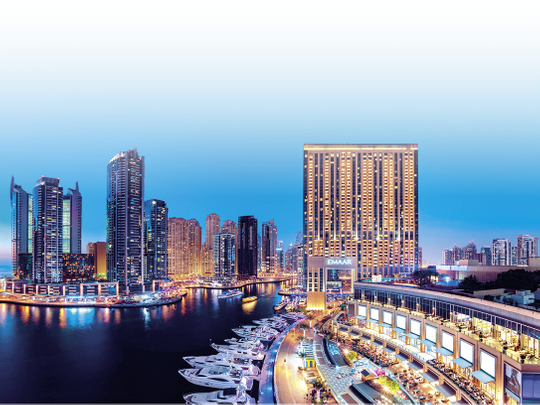
Given Dubai’s image as an expensive metropolis with a robust luxury property market, it is surprising that this sector represents just a small portion of the residential market. In fact, only 3 per cent of all residential transactions concluded last year were within this segment.
Nevertheless, this is reflective of the paradigm shift in Dubai’ market over the last two years, with a large amount of stock being transacted in the mid and affordable segments, overshadowing the prime market that just a few years ago was firmly in the limelight.
Investor buyers continue being drawn to the affordable segment due to the current high yields and easier payment plans while a few developers see robust off-plan transaction volumes as an encouraging sign and continue bringing more stock to the market. Given that affordable segment’s supply pipeline is looming with substantial off-plan deliveries in the run-up to 2020, the high yields expected by many investors post hand-over, are unlikely to be sustained. As the market continues to be flooded with new stock in the lower end, the prime/ultra-prime segment may provide better prospects for investors in the coming few years.
Lower entry points
When comparing global prime and ultra-prime property prices, Dubai offers some of the lowest entry points (price per square feet wise) of any comparable global hub. This position is further intensified by the varied level of price softening witnessed over the last three years across all segments of the market. Prime properties in Dubai are approximately 40 per cent less expensive than Singapore and 50 per cent less than Moscow and Paris. Dubai’s ultra-prime market is also relatively inexpensive compared to the likes of Shanghai and Tokyo, with average prices almost 60-70 per cent lower, and offers excellent value against prices per square feet in London and New York.
The long-term investment potential in Dubai’s prime segment is cemented by a nominal tax regime and notably low real estate investment costs. These costs — associated with buying, holding and selling property — are to be viewed along with acquisition costs as they can detract significantly from an investment and essentially erode the attractiveness of an asset.
Cities such as Hong Kong carry investment costs of approximately 32 per cent, while costs in Singapore and Tokyo are nearly 20 per cent, representing an additional charge equivalent to almost a quarter of the value just to buy, sell or hold property. With notably low buying and selling fees, and almost no holding charges, investment costs in Dubai amount to just 8 per cent— comparable to Shanghai and Mumbai. This makes holding key centrally located assets with reputed developers in Dubai over the midterm and long term all the more attractive - these investment costs are often overlooked by investors, but they have a significant impact on any comparison of prospective investment yields in different cities across the world.
Although oil prices are now displaying a recovery, their low level witnessed over the last two-three years, a strong US dollar and continued geopolitical turbulence have collectively cast a significant dent in the absorption levels in prime stock. With most new units concentrated in the low-to-mid market segment (an upsurge created on the back of projected demand from Expo 2020), the upcoming supply pipeline in the prime sector remains modest. With Dubai’s cementing its position as a global tourist destination and economic hub, strong underlying demand for prime and ultra-prime properties is expected to be sustained in the long run.
Prime City Centres
As the market expands and continues to mature, gaining depth and liquidity in line with population growth, it is likely that demographic pressures will continue to mould the cityscape in a way that accentuates the pull of core areas. These “prime city centres”, shaped by master planning as much as by demographics (this is a novelty in Dubai), will also see natural price appreciation driven both by desirability and spatial limitations creating new opportunities for developers, HNWIs investors and end-users. Over the mid to long term, Dubai’s prime real estate market is likely to witness yield compression, bringing best properties’ returns in line with similar assets in other global cities – or at least bridging part of the significant existing gap, through price appreciation more than rental decline.
On the other end of the market spectrum, the supply surge in the affordable segment coupled with possible insufficient short term end-user demand, is expected to exert further downward pressure on rents, leading to faster yield compression. Eventually, this contraction in yields will reduce investor demand, in turn pulling sales prices down over the mid-term, widening the gap between affordable and prime/ultra-prime prices. The tale of prime and affordable in Dubai will be the one of two markets with very diverging trajectories in the early years after 2020.












